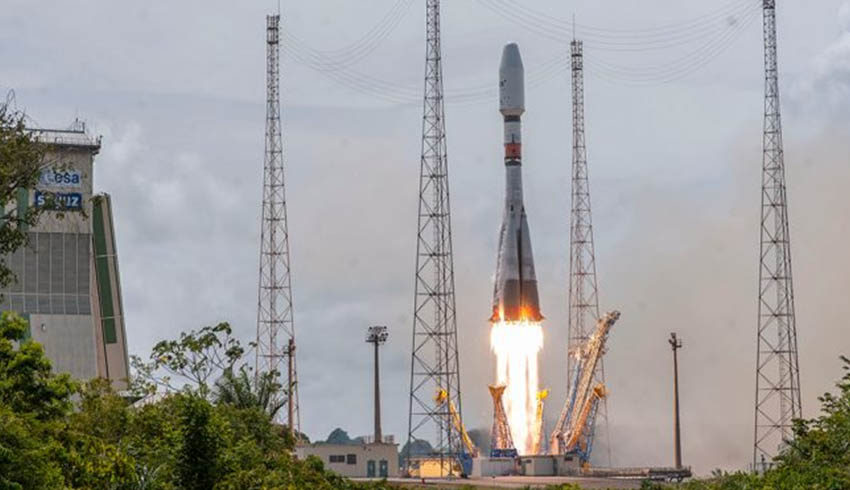The satellite passengers on the SSMS proof of concept rideshare mission were released into sun-synchronous orbits during a flight sequence lasting one hour and 44 minutes from lift-off to final separation, involving multiple deployments with the SSMS dispenser.
These spacecraft will serve various applications – including Earth observation, telecommunications, science, technology and education.
By choosing Arianespace and the SSMS rideshare, small satellite operators receive the same level of quality and reliability as the largest customers – while new operators such as laboratories, universities and start-ups are guaranteed optimum conditions for the launch of their space projects.
Stéphane Israël, chief executive of Arianespace, said, "With Vega’s successful return to flight, we are delighted to have served 21 customers from 13 different countries. These satellites will serve a variety of different applications, including Earth observation, the battle against climate change, telecommunications, the internet of things, science, as well as education."
As a true European effort, the SSMS dispenser system is a European Space Agency (ESA) product developed by Italy’s Avio under ESA leadership, and is produced by the Czech company SAB Aerospace. The European Union helped finance the proof of concept flight.
SSMS is based on simplified contractual clauses as well as a lean integration chain, with CubeSat integration and flight readiness performed for the first time in Europe, at the Czech Republic.
"With this shared launch, space becomes accessible to everyone, including research labs, universities and startups. ‘Bravo’ to the European space team, which has worked from start to finish in adding this new service to Arianespace’s offering, enabling this magnificent success," Israël said.
The Small Spacecraft Mission Service has been designed to be as market responsive as possible, able to accommodate any combination of customers. Regular follow-on SSMS flights are planned once the next-generation Vega C launcher begins operations.
The satellites onboard VV16 are in two categories: seven primary micro-satellites with a mass of 25 to 145 kilograms; and 46 nano-satellites with a mass of 250 grams to seven kilograms.
The first seven satellites were released between the mission’s 40th and 52nd minute, while the remaining 46 were deployed during a sequence of less than three minutes, occurring one hour, 42 minutes after lift-off.
Among these 53 satellites, certain spacecraft will be dedicated to Earth observation, with innovative projects such as GHGSAT-C1, a Canadian satellite at the service of air quality; or ION Satellite Carrier Lucas for the Planet company.
OSM-1 CICERO is the first satellite from Orbital Solutions Monaco, a Monegasque start-up; while ESAIL is the first commercial micro-satellite developed under the European Space Agency’s SAT-AIS program for tracking ships.
Several experimental satellites also were on board Vega, such as TARS from the Kepler company, which is dedicated to the internet of things; as well as the 14 satellites from Swarm Technology, an American start-up whose mission is the use of artificial intelligence in robots and computers.
Proposed for the first time by Arianespace, the SSMS is a European project supported by Europe’s space team. Benefiting from European Space Agency (ESA) funding, the SSMS structure was developed by Avio, located in Colleferro, Italy – which is the Vega launcher’s industrial prime contractor – and manufactured by SAB Aerospace. The European Union also contributed to the funding of this demonstration flight in the Horizon 2020 program’s framework.
As a new-generation light-lift launcher, Vega is perfectly suited to the requirements of the institutional and commercial market. Its performance and versatility enable Arianespace to offer the best possible solutions for putting small to medium-sized payloads into orbit for a wide range of missions: sun-synchronous low orbit missions (such as Sentinel-2A), ballistic missions (the Intermediate eXperimental Vehicle/IXV, as an example), missions in transfer orbit to the Lagrange Point L1 (LISA Pathfinder), and for numerous applications (Earth observation, science, education, defence).
With Vega C, Arianespace will offer increased performance and volume under the payload fairing for its future passengers at the same cost.
Arianespace uses space to make life better on Earth by providing launch services for all types of satellites into all orbits. It has orbited more than 650 satellites since 1980, using its family of three launchers, Ariane, Soyuz and Vega, from launch sites in French Guiana (South America) and Baikonur, Kazakhstan.

